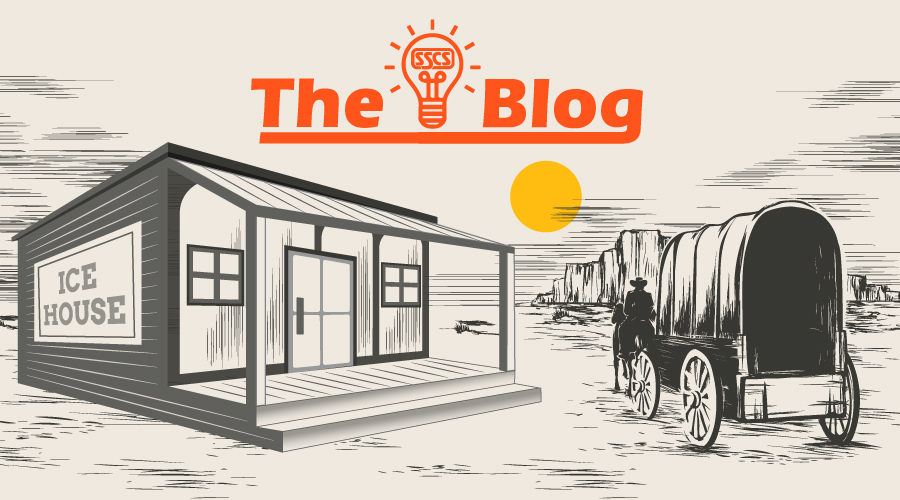
The Saga of the Convenience Store
The historical path of the industry can be divided into discrete, identifiable eras.
This is Part 2 of a two-part blog post. Part 1 is available here.
The Ice Age Cometh
The Great Ages of History are pretty cool. Stone Age, Iron Age, Bronze Age . . . they make up an epic saga that continues to this day!
The history of the retail petroleum industry is filled with significant eras, too, from pre-fuel blacksmithing to powering up multiversal cruisers in Dimension X (or whatever the future may hold).
We covered the earliest parts of this timeline last week. This week we’re going to start with the Ice Age.
No, not that Ice Age, but the age ushered in by the first U.S. convenience enterprise—four Dallas-area ice stores that started to sell groceries as an added revenue stream in 1927. (We do feel obliged to also mention Canadian grocery store magnate Theodore Pringle Loblaw and colleagues who started opening drive-through convenience stores as early as 1919.)
Motorists Drive Development
Early stores sharpened their identity by staying open longer than other retailers and by being geared to motorists’ growing desire for quick arrival and departure. With increased car ownership literally driving the trend, it was only only a matter of time until fuel retailing became part of the store’s mix:
-
- In 1921, W.H. Spur Distributing Company was established and opened its first Spur Outlet, selling gasoline, motor oils, and automobile accessories. It would later become the Conoco brand.
-
- In 1923, Phillips Petroleum Company was founded, their service stations marketing gasoline under the Phillips 66 brand. They sold various types of merchandise, too.
-
- In 1924, Chevron was expanding rapidly and their stations would also offer goods beyond just gasoline.
These weren’t convenience stores in the modern sense; they were more akin to auto supply stores. The Age of the Convenience Store came a few decades later, after one other major stage in its development.
Automotive Repair Dominates
If you grew up after World War II, the gas station trade was as good as synonymous with car repairs—snacks were different; they were something you bought at the corner grocery.
This mechanical identity started long before—the carriage era, in fact—but once an average person could own a Model T or some other affordable car in the 1920’s, mechanical repair really took off as a viable profession.
Early cars needed a lot of maintenance compared to today, and roadside assistance wasn’t yet a common service. So, the decision was made to combine gas stations and service garages. This allowed drivers to fill up their tank, get their oil changed, tires checked, or any necessary repairs done all at one place.
These dual-purpose facilities became especially important as longer-distance travel became more common, with drivers needing places along the route to service their vehicles. And if you were really popular, you became the mechanic for the neighborhood, reaping its potential for return business.
The Age of the Convenience Store and Beyond
In more recent years, due to a number of factors including the evolution of automobile technology into more complex electronic systems, the industry has drifted away from repair services. Specialized auto repair shops have helped fill this gap, along with a group of gas stations that continue to make a profitable niche business out of mechanical service.
For a majority of fuel retailers, however, the best way to replace a lost revenue stream from auto service was to attach a more fully formed merchandise concept to the gas station. The model shas been so widely successful that it has transformed more than the convenience channel, blurring into other retail streams as the race for high quality and innovation pushes competition to new heights. In fact, it’s not that much of a stretch to say that, in the mind of the general public, the prevailing image of food retailing is the c-store.
What does the future hold? Well, you can count on variety, for sure. C-stores partner with a lot of interests, and do it well, whether it be food chains, retail stores, parcel delivery services, or car wash services. Consumers wanting a more individualized, self-empowered experience will probably have a say. And yes, we suppose there will be some kind of accommodation for flying vehicles and rooftop landings, sooner rather than later.
Here at SSCS, well, we say bring it on. We weren’t around to support blacksmiths and converted ice houses—technology probably would have been an issue—but we have been providing software and services to petroleum retailers since 1981. We were on the ground floor for the transition from automotive service to convenience, proving ourselves equally adept at providing software solutions for both. You can also be sure we’ll be evolving as the industry evolves, meeting their needs every step of the way. Don’t miss out on the Age of C-Store Technology. Give us a call at (800) 972-7727 and we’ll get you started.






Leave A Comment